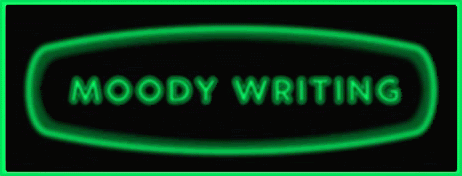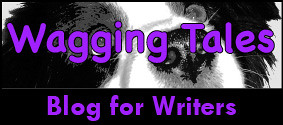There are basically two ways you can start a
story. You can have all guns blazing action or you can establish the ordinary
world of the character before things change.
Both approaches have their pros and cons and a
lot of it depends on various factors to do with your story and what you
consider to be right for you as a writer. But the problem comes when you show
your first chapter to someone else and they don’t react in the way you’d hoped,
making you lose confidence in what you had thought to be quite a good scene
that set things up nicely.
Questions arise such as maybe the other approach
would be better for this story, for this genre, for you as a writer. But the
truth is these are the wrong questions. So if the start of your story isn’t attracting
the kind of response you want, what are the questions you should be asking
yourself?
Whether your opening is fast or slow is not a
deciding factor in how readers will respond. The choice to start in the middle
of high drama or ordinary life is simply that, a choice. There are countless
examples of both approaches from hugely successful books, so it’s clear that
both can work. And I don’t mean work under the right circumstances for
particular genres, I mean they have been both used in every genre, by every
type of writer.
There is no situation where you couldn’t
successfully swap one for another, if you so chose, as long as certain key
elements were present. Those key elements are far more important than the
pacing of the opening pages.
Feedback is important. When a person you have
asked to read over your story isn’t wowed by the opening, that’s very helpful
(if somewhat painful). However, they often feel obliged to try and offer some
explanation of why it didn’t work for them. They might say it was a bit too
slow (i.e. boring) or a bit too fast (i.e. confusing) and this becomes your
focus. But while you should definitely take heed of their lack of involvement
with the story, their pinpointing of what they see as the problem is not all
that useful.
All you need to be aware of is that they weren’t
drawn into the world of the story, or to put it more simply, they didn’t find
it very interesting.
This is the key question to bear in mind about
the opening: Is it interesting?
It’s difficult because it isn’t something you can
find the answer to on Google or by reading a book on grammar. Far easier to
look at the structure and framework, which are nice and solid. Maybe if I make
it a shorter chapter people will be more engaged? Or perhaps if I have a
cliffhanger at the end of chapter one? Or maybe start with a cliffhanger?
“Interesting” is such an abstract word that it’s
tempting to not look too hard at that part of the story. After all, what’s
interesting to me may not be interesting to you. Why not just leave it for
others to decide, etc.
Which is fine when things click and fall into
place (as they occasionally do), but when they don’t and you have to fix it
then you either have to roll up your sleeves and get a little analytical, or
give up and write something else.
The thing is though, it isn’t so hard to make
sure what you’re writing has the ingredients of an interesting story. You have
a character, and this character has particular traits. Something about them is
appealing to you as a writer. What?
In most fiction the character has a fairly narrow
focus. A fictional character is only driven by one or two things. It defines
who they are and what they try to do within the scope of a story. People in
real life may obsess about something for a few days, get distracted, move onto
something else, lose interest, etc. This doesn’t happen in fiction.
A hard-bitten cop who trusts no one, will be
grouchy to the end. A wise-cracking waitress won’t become a sweet angel when
she finds love. You might change them by putting them through various
adventures, but that still requires you to know who they are at their core and
what it would take to affect them.
Knowing these core traits is a vital element of
any opening. If you don’t know this about your character that’s probably
explains why your opening doesn’t grab readers. If you know what it is but
don’t think it’s all that relevant to the story you’re telling, again, not
going to work.
You need to figure it out (even if you have to
write a terrible first draft to do so) and it has to not only be true to the
character, it has to appeal to you as a writer.
Once you have a clear idea of what your main
character is about (and this is also true of the other characters in your
story) your opening scene should show that side of them.
It doesn’t matter if it’s done in a fast pace
action scene or a down to earth bus ride to work, you need to introduce your
character, through their defining feature, to the reader.
But that doesn’t mean you just show a happy man
being happy or an angry man being angry. You don’t show something in fiction by
simply creating an accurate picture of it. You show it by testing it.
A man who is happy and zen-like might be put in
an aggravating position. An angry man is forced to be nice in front of his boss
who might give him a raise.
It’s only when a character is put under pressure
that we see who they really are. Someone might say they’re happy go lucky and
nothing bothers them, but we only believe it when we see them live up to their
claim. This principle is true in any part of a story, but it’s most important
at the start, when we need to work out who we’re reading about as quickly as
possible.
This testing of a person’s core trait
automatically creates conflict, and therefore drama. Whatever the scenario, if
the character is being true to themselves when events are trying to make them
go another way, how they deal with it and the consequences that result will
always be interesting. Then, of course, you just have to write the rest of the
story.
If you found this post useful please give it a retweet. Cheers.








































































































9 comments:
I didn't really test him, but I did show my main character's core in the beginning of my current manuscript.
Interesting and engaging both have to be present. Otherwise there's little reason to connect with the characters.
@alex - how you choose to show your character's core is of course a matter of personal preference, but for those having issues I hope this article helps ( a little).
I've noticed that when books start with action, I often am not interested because I am not invested in the characters yet. It only works, for me, if the author does a great job of quickly instilling character while the action is happening.
Rule number One...leave out the stuff the reader skips over.
Great rule.
@Ted - both approaches can work wonderfully or fail abysmally, depending on how well they're executed.
@Mac - of course first you have to figure out what that stuff is...
Lol. I find the beginning the hardest part. I like to start in the middle and work my way to the end and then back to the beginning.
@lilith - interesting, I'm the opposite. Middles take me forever to get right (or at least acceptable).
For one of my manuscripts I changed the begining (the first chapter) atleast 4 times. I just was not sure at which point the story should start :(
Your blogs are easily accessible and quite enlightening so keep doing the amazing work guys.
cheap essay writing service